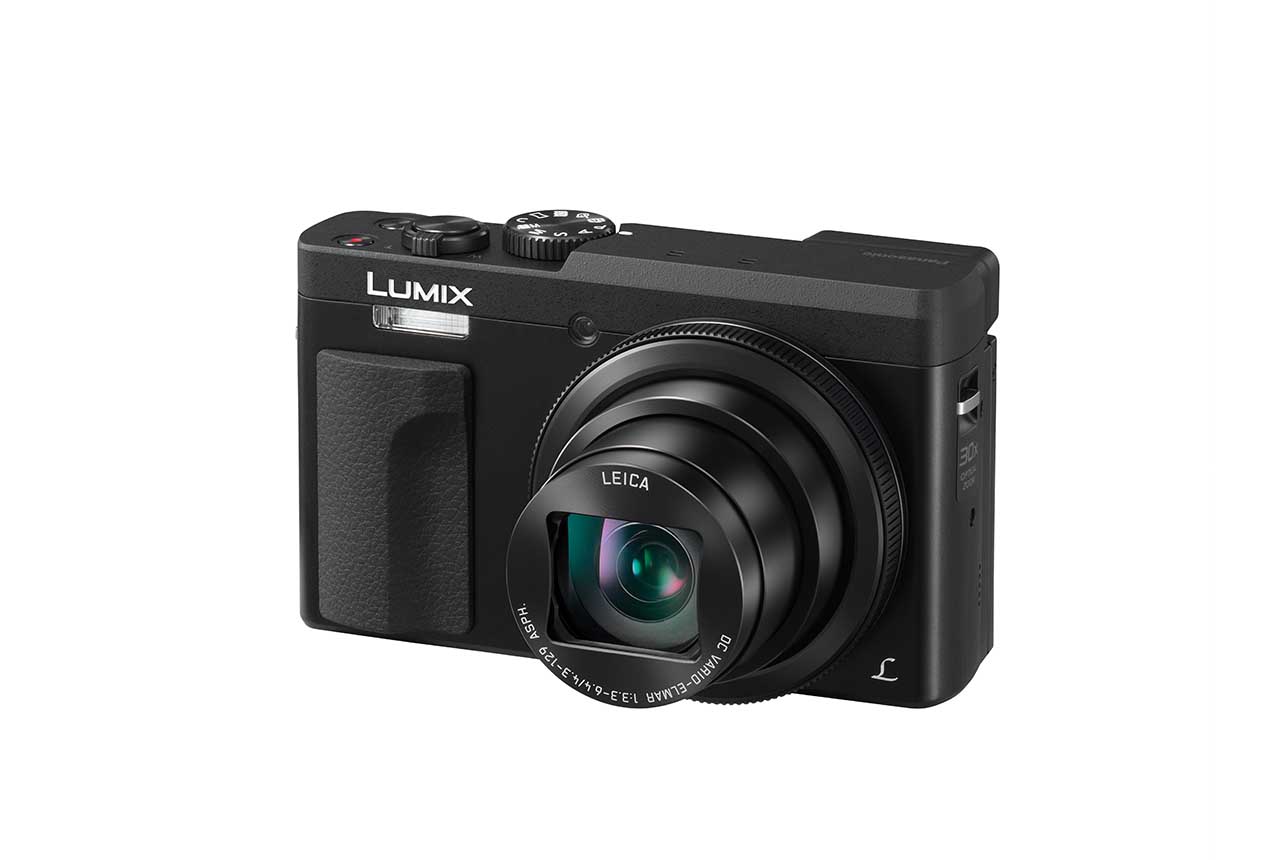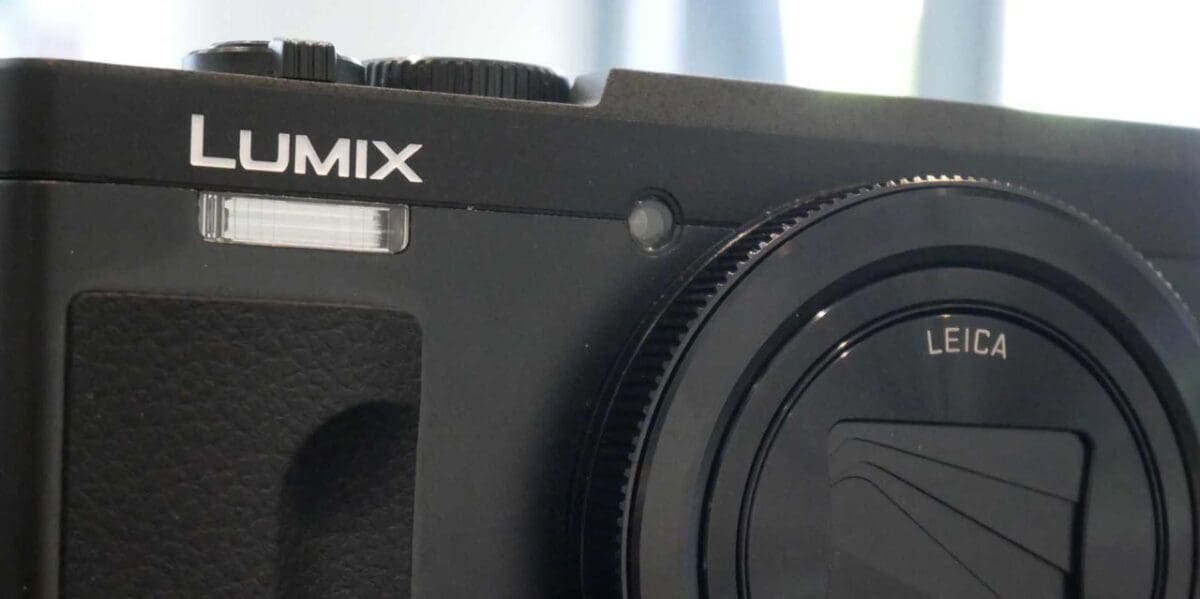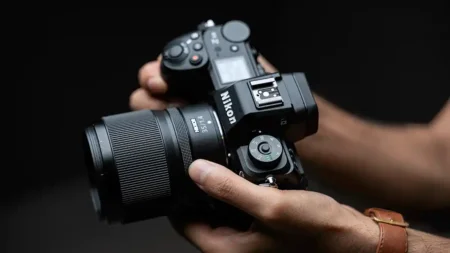Panasonic’s latest travel zoom compact camera packs in a lot of sophisticated features from its Lumix G siblings. Could it be more powerful than just a travel camera – could this be the ideal ‘next step up’ for smartphone users? We answer the big questions in our Panasonic TZ90 / ZS70 review.
30 second Panasonic TZ90 / ZS70 review…
The Panasonic TZ90 / ZS70 boasts a slightly larger body than its predecessors, but the company has filled that space with copious sophisticated features, such as an electronic viewfinder, tilting touchscreen, 4K video, 4K Photo, Post Focus and Focus Stacking modes, fast AF and a whole lot more.
Its build quality is robust and well thought-through, and the image quality is superb for the size of its sensor.
So feature-rich and user-friendly is the TZ90 / ZS70 that I believe it can transcend its station in life as a travel zoom and be a perfectly serviceable entry-level camera for smartphone users who are looking to take their photography more seriously.
Key features
- 1/2.3in 20.3-megapixel sensor
- 24-720mm equivalent focal range
- 4K videos in 3840×2160 at frame rates up to 30p
- 5-axis image stabilisation
- Live Cropping in video mode
- 4K Photo mode
- Post Focus mode
- full manual control
- raw shooting
- 49-area AF system
- 10fps continuous shooting (5fps in AF-C mode)
- 1/16,000sec max shutter speed (with electronic shutter)
Panasonic TZ90 / ZS70 Overview
Panasonic’s latest travel compact camera is a specification-rich superzoom, offering a 30x optical zoom with a 24-720mm equivalent focal range and a 1/2.3in 20.3-megapixel sensor.
Panasonic has also given its flagship travel zoom 4K video capability. The Panasonic TZ90 / ZS70 can record QFHD 4K videos in 3840×2160 at frame rates up to 30p, or make slow-motion effect movies by shooting at 120 or 100fps in full HD.
Panasonic’s 4K Photo technology is also here, enabling you to shoot a short burst of 4K video at 30fps from which you can extract 8-megapixel still frames.
Like many of Panasonic’s recent Lumix G interchangeable lens siblings, the fixed-lens TZ90 / ZS70 adds the company’s Post Focus technology, allowing users to change the focal point of an image after shooting. And Panasonic’s Focus Stacking feature allows photographers to change the depth of field by combining several images.
Other key features include tilt-correction and 5-axis image stabilisation to help stabilise your footage at longer focal lengths. A new 4K Live Cropping feature lets you pan and adjust composition even after recording is complete by cropping slightly into your footage. You’ll also find a silent shooting mode for those times when you want to be more discreet.
The TZ90 / ZS70 also offers the additions of a tilting 3in, 1040k-dot LCD touchscreen and viewfinder, a 49-area AF system, 10fps continuous shooting (5fps in AF-C mode), a 1/16,000sec max shutter speed (with electronic shutter), a time lapse mode, plus the full manual control and ability to shoot raw files (which can be processed in camera) found on its predecessor, the ZS60 / TZ80.
It’s worth noting, too, that the camera’s new 3in, 1040k-dot tiltable LCD touchscreen, when flipped up to the full 180-degree capability, enters a selfie mode that guides you through taking the ideal self-portrait.
Panasonic has also given the TZ90 / ZS70 a new 0.2in, 1166k-dot Electronic View Finder, which boasts an eye sensor that switches the EVF on automatically when you bring it to your eye.
The Panasonic TZ90 / ZS70 employs the company’s Venus processing engine and has a native ISO range from 80 to 3200, which is extendable to ISO 6400.
Panasonic also says the TZ90 / ZS70 offers a 0.1sec AF speed thanks to its DFD, or Depth From Defocus technology – which we explain here. The AF system gives you 49 points across the frame, and the camera also adds a new Low Light AF mode for locking focus in dark conditions.
Basically, if you have a CSC or DSLR more than a few years old, the TZ90 / ZS70 blows its specifications out of the water aside from sensor size.

Panasonic TZ90 / ZS70 Build & Handling
Panasonic knows it has one of the best travel zooms on the market with its TZ / ZS line, and you get the feeling no expense was spared in its construction. Straight out of the box you get the impression that the Panasonic TZ90 / ZS70 is a robust piece of kit.
The body is a little thicker than previous iterations of the TZ / ZS cameras and a little less pocketable than it once was, but it feels like a proper camera. Solid. Robust. Built to last. Its body is a mix of metal and hard plastic, with a textured rubber grip on the front and another rubber thumb grip on the back. These grips fit the contours of my hand and fingers superbly, and with the touchscreen I can pretty much shoot one-handed if needed.
On the TZ90 / ZS70 top plate is the mode dial, shutter button with zoom toggle, the power button and a one-touch video control.
On the back of the Panasonic TZ90 / ZS70 is the viewfinder, and LVF button that doubles as a Fn4 button, a direct control for 4K Photo mode, Playback and Post Focus buttons (which double as Fn1 and Fn2), a four-way controller scroll wheel where you can set flash, exposure compensation, drive mode and your focus mode. Below the four-way controller are your Trash and DISP buttons. On the right side is an HDMI port, and underneath the camera is a compartment for the battery and microSD card.
It’s also worth noting that on the front of the TZ90 / ZS70 is a focus ring around the lens.
The compartment doors are rigid and sturdy. The touchscreen is responsive and equally robust. The Panasonic TZ90 / ZS70 is a premium compact camera that feels like great care and attention was put into its design.
Full disclosure: I’ve personally owned several iterations of Panasonic’s TZ line of travel zoom cameras dating back to the TZ3. I’ve found them to be simple-to-use, versatile cameras with great image quality for what they’re intended. So my expectations for the TZ90 / ZS70 were quite high.
The Panasonic TZ90 / ZS70 starts up in about two seconds and is ready to go. For several weeks I kept it in a jacket pocket, a side pocket of a backpack, a car cupholder, even. I took it everywhere, and I’m pleased to say the TZ90 maintains the range’s reputation for versatility.
This is largely down to the camera’s very responsive touchscreen, particularly for travel and street photography. A touchscreen doesn’t sound all that revolutionary anymore, but I find the size of the camera really affects how I use it. Consider the recently announced Canon EOS 200D / Rebel SL2, for instance, which I got to use at its launch event in London recently.
The EOS 200D / SL2 is the smallest DSLR you can get, but even so it’s just that extra bit too large to keep in a pocket and pull out and compose quickly. You need to rotate the screen, switch to live view, find your angle, etc.
With the Panasonic TZ90 / ZS70, despite its larger size over its predecessor, it’s still pocketable in some clothes and outer wear. I can pull it quickly from a back jeans or jacket pocket, press the power button and zoom in to my desired composition with one finger, then press my focal point on the touchscreen to set my focus. That’s it!
And the Panasonic TZ90 / ZS70 has nearly the same resolution as the 200D / Rebel SL2 (24.2MP) – although with a physically smaller sensor. Though to be fair, we haven’t yet been able to shoot with a final production model of the EOS 200D / Rebel SL2.
Older versions of the Panasonic TZ / ZS line were versatile because of their size and focal length range and image quality (for the time), which allowed me to stuff the camera in a pocket and stand on the beach at Mont St Michel in France, for instance, and zoom in and out to capture a range of different compositions.
With the TZ90 / ZS70, some of that pocket stuffability is sacrificed with its larger body shape, but when using the Panasonic TZ90 / ZS70 I can do the same thing even faster with the touchscreen. I can press the Post Focus direct control button and, from a short burst of 4K video, create an image of Mont St Michel with maximum depth of field and another of the iconic building isolated in focus within its stunning landscape (Panasonic should probably send me there to actually shoot this).
Panasonic TZ90 / ZS70 Performance
Image quality really impressed me with the Panasonic TZ90 / ZS70. The TZ / ZS cameras I’ve used seem to have a knack for picking up detail, and never has it been better than in the TZ90 / ZS70.
Shooting close-ups and portraits this was evident, but what I particularly appreciated was the detail it picks out in the sky. So many compact cameras I’ve used will shoot an overcast sky and produce a blanket of white. But the Panasonic TZ90 / ZS70 has good dynamic range and picks up the tonal variations in thick, grey skies so it does a good job of reproducing what you saw.
Overall, exposures are spot on. Highlights are well maintained in bright, overhead sunlight. Colours are rich and vibrant. I don’t think I spent more than five minutes in Photoshop on any image, if that.
Noise is pretty well handled in low light. I found that once you start shooting at about ISO 3200, that’s when you start to notice some of the finer details smudging over when you zoom into your images.
The TZ90 / ZS70 AF system is fast and responsive. It manages well to pick out the areas of contrast in low light, and in tracking mode it locks on to subjects and reliably follows them as they – or you – move.
One feature I found myself not really using was the electronic viewfinder. It’s bright and clear, but it’s just a bit too small to really be an effective tool, in my opinion. I sometimes struggled to make out what I was seeing.
Overall, though, the Panasonic TZ90 / ZS70 is a feature-packed camera, all of which perform well. It’s simple – and quick – to use, and it produces some very pleasing images and video.
[FAG id=39398]
Panasonic TZ90 / ZS70 Verdict
The Panasonic TZ90 / ZS70 builds on all the gradual improvements of its predecessors over the years and really offers the complete package. It presents perhaps the best specs on the market of any travel compact camera, and delivers on all those promises.
In fact, I’d even make the case that the Panasonic TZ90 / ZS70 should be considered beyond one’s travel camera needs. Not to keep picking on the Canon EOS 200D / Rebel SL2, but it is an entry-level DSLR that Canon has said is squarely aimed at smartphone photographers looking to take their photography more seriously.
While the 200D / SL2 offers interchangeable lenses and a larger sensor – and these are, of course, big advantages – I’d be tempted to argue that the TZ90 / ZS70 represents the next logical step in that budding photographer’s journey.
It’s small, it’s feature-rich and boasts many of the design elements these users will have grown accustomed to on their phones. And because it offers full manual control, along with some of the more advanced features from Panasonic’s Lumix G range, there is room to grow with it.
More importantly, though, it produces nice images. The Panasonic TZ90 / ZS70 is a quality, dependable camera you can rely on in most situations.



